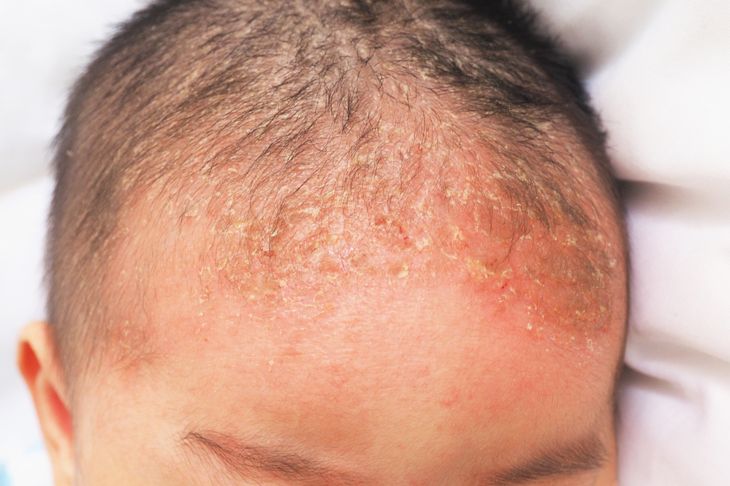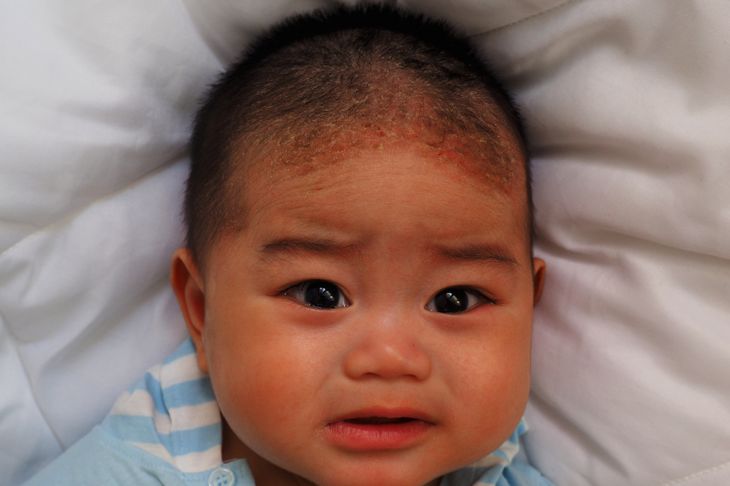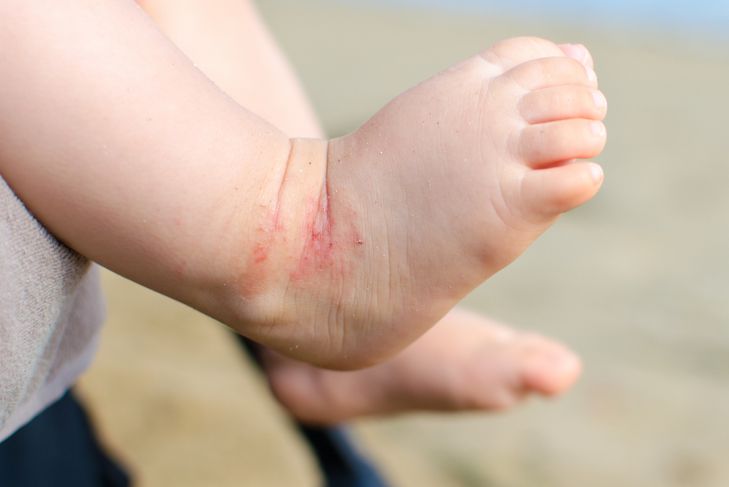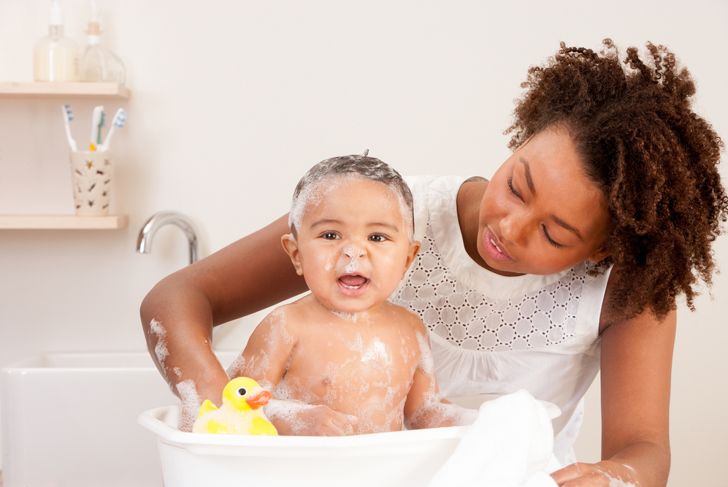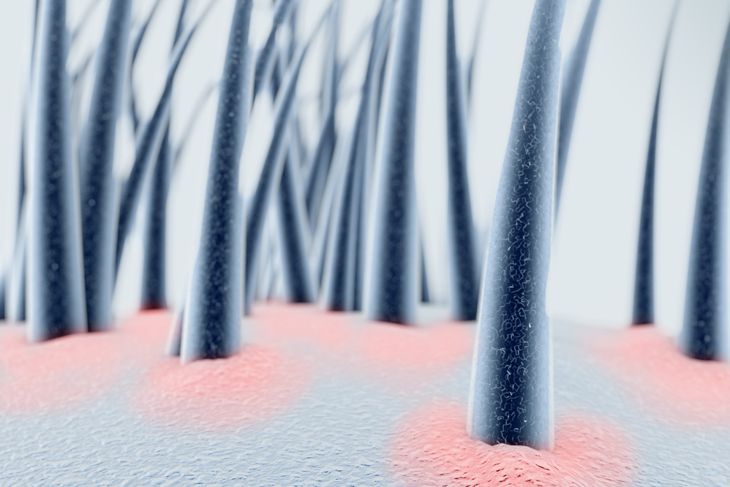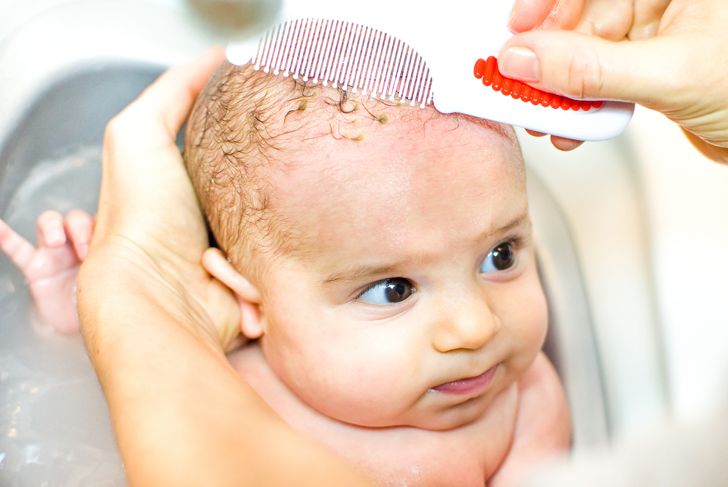Congratulations on your bundle of joy! Being a new parent is a beautiful journey, but there are many obstacles along the way. If your notice scaly patches on your newborn’s scalp, don’t worry. It is a common condition known as cradle cap. Keep reading to learn more about this harmless skin condition, what it looks like, and how to treat it.
What is Cradle Cap?
Infantile seborrheic dermatitis is the medical term for cradle cap. It is a skin condition that is not painful or itchy. Although it is predominantly found on the baby’s scalp, it the scaly patches may appear on the ears, eyelids, nose, or groin area as well. The symptoms should clear up within a few weeks or months thanks to at-home remedies. If not, medical attention may be necessary.
What are the Symptoms of Cradle Cap?
If you notice flaky, white scales or thick, yellow patches on your baby’s scalp, it might be cradle cap. The affected area might be abnormally dry or oily. You might experience a mild redness, too. As mentioned, the scalp is prone to cradle cap, but similar oily or dry patches of skin might be present on the eyelids, ears, nose, or groin.
Is Cradle Cap the Same as Eczema?
Like seborrheic dermatitis, eczema is a skin condition. Infantile eczema can affect little babies. However, a significant difference between the two ailments is itching. Eczema is itchy while cradle cap is not painful or bothersome. If your child is scratching, it might be something like as infantile eczema.
What Causes Cradle Cap?
The definitive cause is unknown. However, there are many contributing factors including hormones that pass from the mother to the fetus in the womb. The hormones cause sebum, a type of oil, to overproduce in the hair follicles and glands. Malassezia is a yeast fungus that grows in the sebum along with bacteria and might also cause cradle cap. Poor hygiene does not cause the skin condition nor is it contagious.
Can You Prevent Cradle Cap?
It can be difficult to prevent cradle cap since the cause is still a mystery. However, using a mild shampoo on your newborn’s hair every few days might prevent the scaly patches from forming. Never use any soap or shampoo that is too strong unless directed by your pediatrician or medical provider.
Does Cradle Cap Require Medical Attention?
In most cases, cradle cap does not require medical attention. Within a few weeks or months, the skin condition should clear up on its own. Never use over-the-counter cortisone or antifungal cream to combat cradle cap without talking to a doctor first. Some products contain toxins that will irritate your infant’s skin. Likewise, dandruff shampoos that contain salicylic acid are not recommended because it can absorb into the baby’s skin.
How Should You Wash Your Baby’s Hair?
You can wash your baby’s hair daily with a mild shampoo just for babies. Using a small, soft-bristled brush, loosen the scales by making gentle, circular strokes. You can also rub your fingers or a washcloth on the patches but never scratch them. Next, rinse the shampoo with warm water to see if the oily or dry skin washes away.
What Are Some Other At-Home Remedies for Cradle Cap?
Besides shampoo, petroleum jelly might help loosen up the yellow scales. You can gently rub some on the affected area. Mineral oil drops can also help. Let either one of these healing products soak into your baby’s skin for several minutes or hours before shampooing and brushing like normal. Make sure you always rinse out the oils, so they do not make the skin condition worse. Continue the same techniques even after cradle cap has cleared to prevent recurring scale buildup.
When Should You Visit a Doctor?
If you try to use at-home remedies to no avail, you should contact your pediatrician. Further, if the scaly patches spread to your baby’s face or body, seek medical advice. Before your doctor’s appointment, keep in mind how long your infant has had cradle cap. The medical provider will also want to know what you have done to treat the skin condition including what type of shampoo products you use and how often you use them.
What Medical Treatments Help?
Your doctor may recommend a dandruff shampoo used by adults if at-home remedies do not help the skin condition. It is essential the shampoo contains two percent of the antifungal medication ketoconazole. Hydrocortisone cream may also be recommended to reduce inflammation and redness associated with cradle cap. For both treatments, be sure to avoid contact with the eyes.

 Home
Home Health
Health Diet & Nutrition
Diet & Nutrition Living Well
Living Well More
More